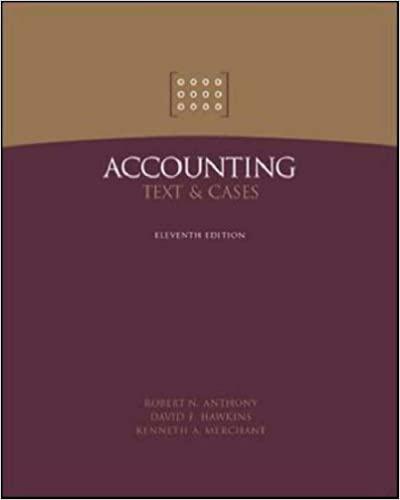Answered step by step
Verified Expert Solution
Question
1 Approved Answer
Please provide an outline summary of the following reading: * Right-click to open a new image in a new tab for high definition* Revenue Recognition
Please provide an outline summary of the following reading:
*Right-click to open a new image in a new tab for high definition*
Revenue Recognition Prior to 1996, Microsoft's revenue recognition policy was fairly straightforward. Revenues from sales to distributors and resellers were recognized when shipped, revenues from corporate license programs were recognized when the users installed the product, and revenues from products sold to OEMs (original equipment manufacturers) were recognized when the OEM shipped the licensed products. However, following the release of Windows 95 in the first quarter of fiscal 1996, the company adjusted its revenue recognition policy due to a change in the implied commitments underlying the sale of some of the company's software. The following disclosure from the company's 1997 10-K describes the change to a more conservative policy that defers revenues from selected product sales: In fiscal 1996, Microsoft committed to integrating its Internet technologies, such as the Company's Internet browser, Microsoft Internet Explorer, into existing products at no additional cost to its customers. Given this strategy and other support commitments such as telephone support, Internet- based technical support, and unspecified product enhancements, Microsoft recognizes approximately 20% of Windows operating systems revenue over the product life cycles, currently estimated at two years. The unearned portion of revenue from Windows operating systems was $425 million and s960 million at June 30, 1996 and 1997. Since Office 97 is also tightly integrated with the rapidly evolving Internet, and subsequent delivery of new Internet technologies, enhancements, and other support is likely to be more than minimal, a ratable revenue recognition policy became effective for Office 97 licenses beginning in 1997. Approximately 20% of Office 97 revenue is recognized ratably over the estimated 18-month product life cycle. Unearned revenue associated with Office 97 totaled $300 million at June 30, 1997. At the time that the company made this change, GAAP did not directly address the recognition of software revenues. Greg Maffei, CFO of Microsoft, explained the company's decision during an analys meeting in 1997: We ship a product; the customer gets the benefit of many of the fine features of that product the day we ship. But there are subsequent deliverables: browsers, product support, subsequent upgrades that are flying upgrades which are free or which do not require incremental payment, or potentially-God forbid-bug fixes. Per GAAP, as GAAP requires, we put the value of those subsequent upgrades, what are called unspecified enhancements; we try and put a value on those things. And as we subsequently ship those unspecified enhancements over the life cycle of the product, we recognize revenue. Currently, we are basically at an 80 / 20 recognition policy, as required and as we earn it, for these products, meaning that 80 percent of the value is delivered day one and 20 percent over the remaining life cycle of the product."? The balance in the company's unearned revenue account grew steadily following the adoption of the new revenue recognition policy in 1996 (see Exhibits 3, 4, and 6). By the end of fiscal 1999, the ending balance in the unearned revenue account was $4.2 billionapproximately a full quarter's worth of revenue. The balance was large enough that Wall Street analysts paid close attention to the number. In a 1999 analyst report, Morgan Stanley Dean Witter analyst Mary Meeker noted, "We believe the company's core earnings power is held back, in part, by the company's aggressive revenue-deferral efforts. 8 While specific guidance on the treatment of software revenues did not exist in 1995, the American Institute of Certified Public Accountants (AICPA) subsequently issued Statement of Position (SoP) 97-2 that directly addressed the recognition of revenue related to upgrades, add-ons, and other enhancements. The statement required that a portion of software revenue be deferred when the software arrangement consisted of "multiple elements," including additional software products, upgrades / enhancements, and post contract customer support, even if the elements were deliverable only on a "when and if available basis." 9 Microsoft apparently viewed the integration of its Internet browser as an additional "element" to which a portion of the current revenue received from its sales of Windows and Office 97 had to be attributed. 10Step by Step Solution
There are 3 Steps involved in it
Step: 1

Get Instant Access to Expert-Tailored Solutions
See step-by-step solutions with expert insights and AI powered tools for academic success
Step: 2

Step: 3

Ace Your Homework with AI
Get the answers you need in no time with our AI-driven, step-by-step assistance
Get Started


